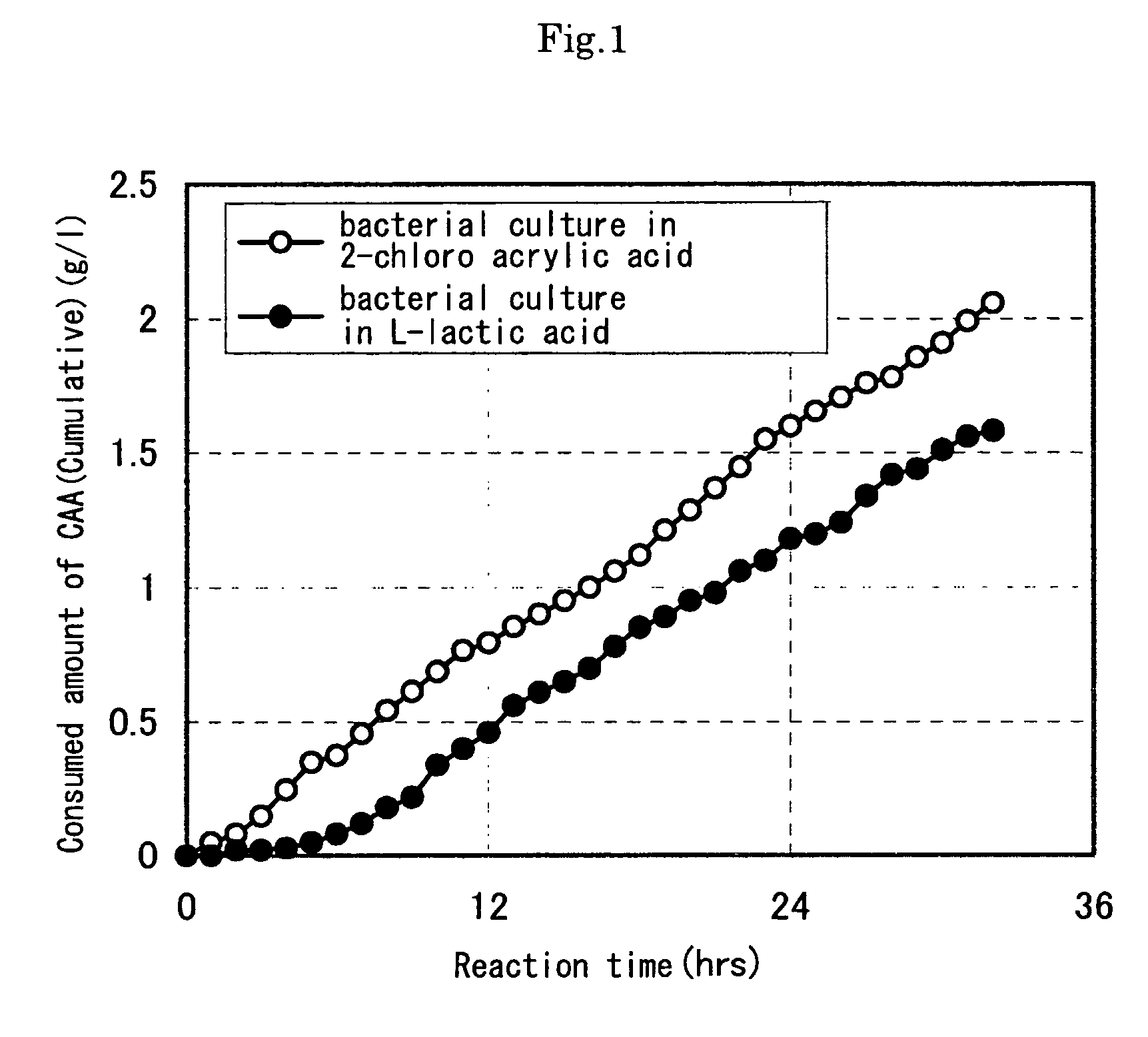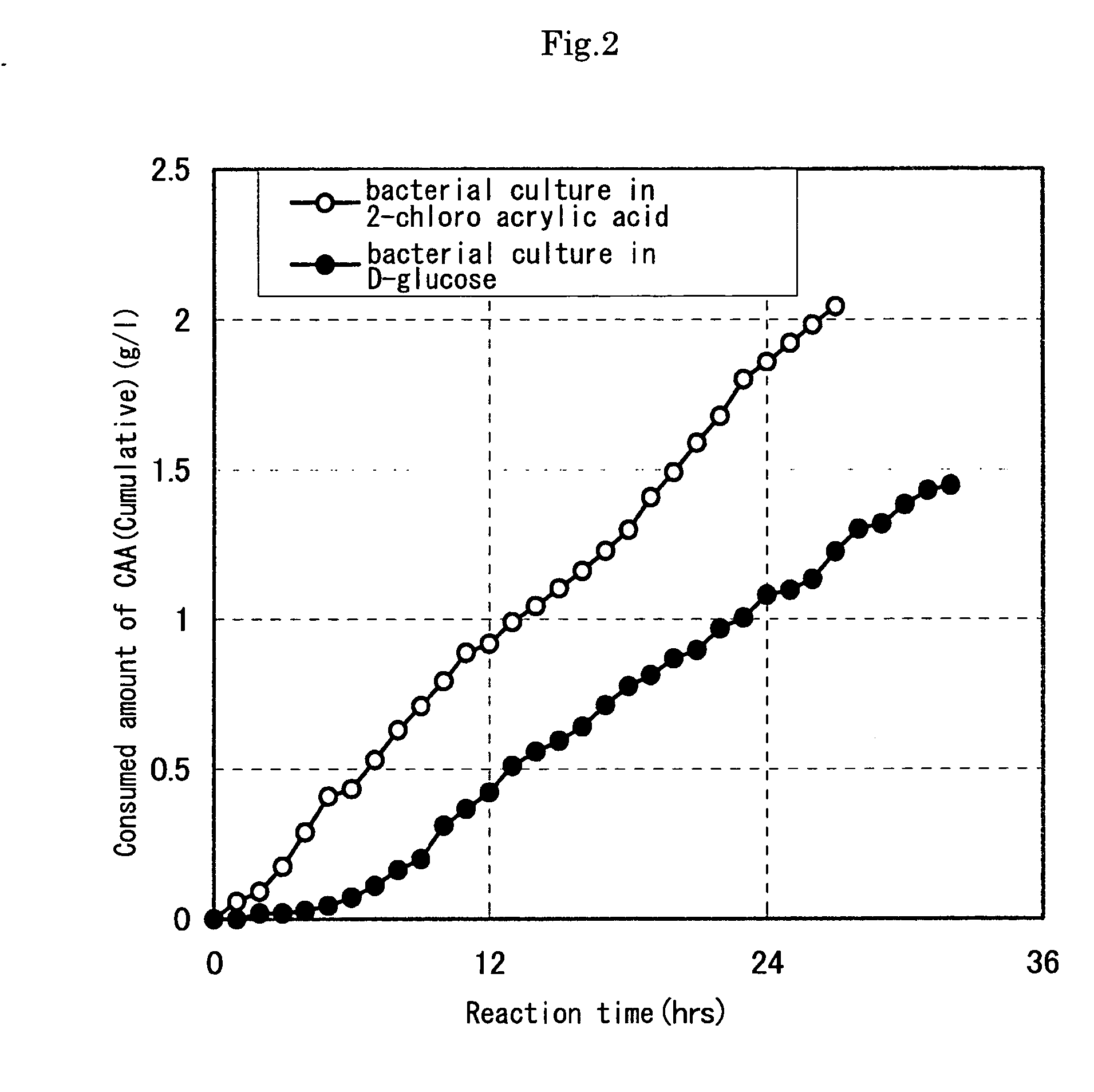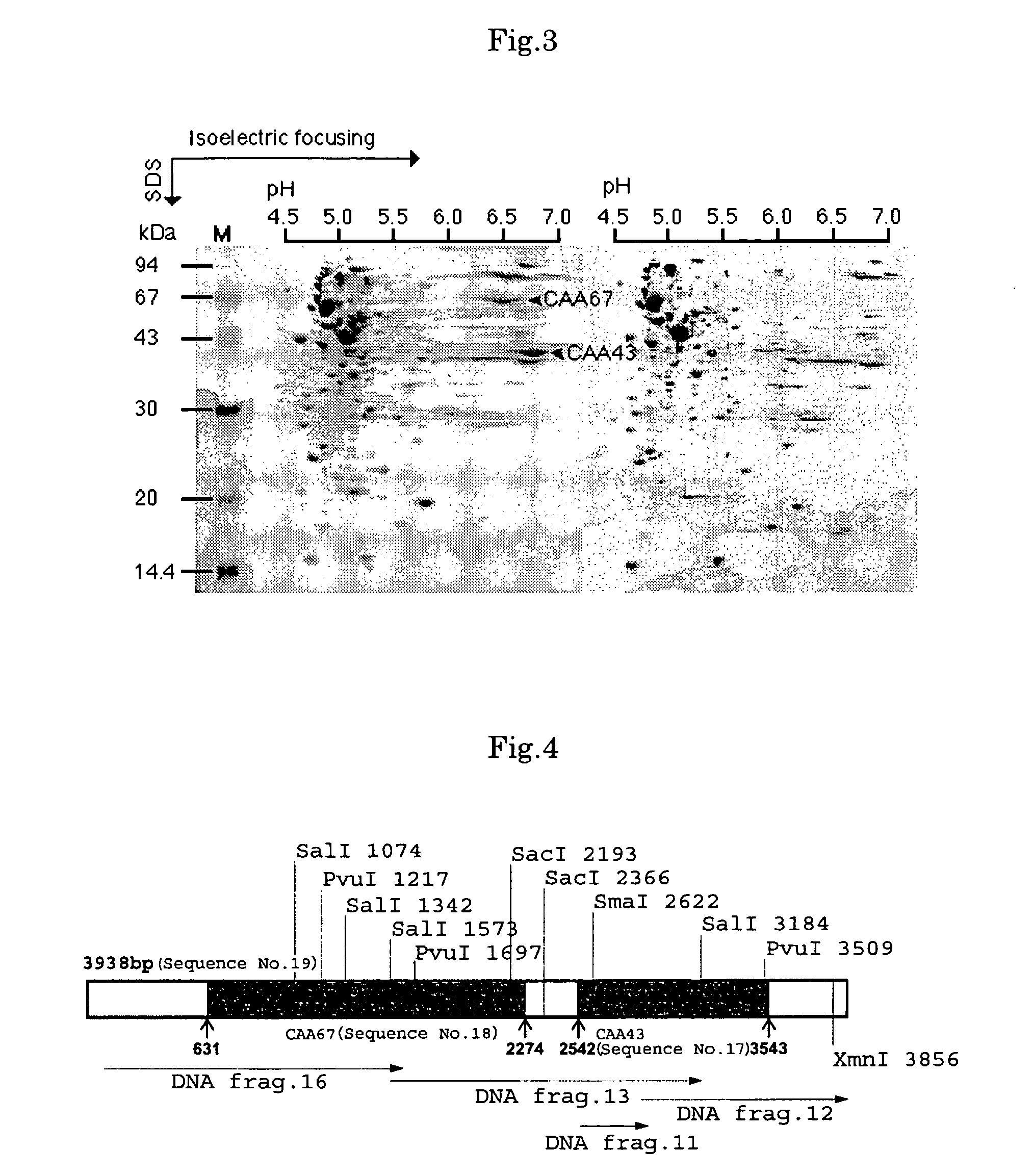Reductase gene for alpha-substituted-alpha, beta-unsaturated carbonyl compound
- Summary
- Abstract
- Description
- Claims
- Application Information
AI Technical Summary
Benefits of technology
Problems solved by technology
Method used
Image
Examples
example 1
Detection of Activity of Reducing α-Halo-Carbonyl Compound Having α,β-Carbon-Carbon Double Bond
[0066] The reduction activity of the compound was detected using α-chloroacrylic acid or α-chloro-α,β-butenoic acid as a substrate by quantitative determination of a reduction product thereof, α-chloropropionic acid or α-chlorobutylic acid with gas chromatography. In addition, 0.4 ml of a reaction solution from which microbial cells were removed by centrifugation or the supernatant of a culture medium was mixed with 0.4 ml of 2N HCl and the resulting mixture was then subjected to a gas chromatographic analysis under the following conditions.
[0067] Apparatus: GC-7A (manufactured by Shimadzu Corporation)
[0068] Column: Thermon-3000 / SHINCARBON A, 2.6 mm×2.1 m
[0069] Carrier gas: nitrogen, 50 ml / min
[0070] Detection: FID
[0071] Column temperature: 200° C. (constant)
[0072] Injection: 2 to 10 μl, 260° C.
[0073] Recording: CHROMATOCODER 12 (SIC)
example 2
(1) Cultivation of Pseudomonas sp. SD811 Strain Using Reduction Substrate as Carbon Source
[0074]Pseudomonas sp. SD811 strain was incubated in a culture medium containing the following ingredients: α-chloroacrylic acid (2 g / l), yeast extract (0.5 g / l), ammonium sulfate (2 g / l), sodium dihydrogen phosphate (1 g / l), dipotassium hydrogen phosphate (1 g / l), and magnesium sulfate (0.1 g / l).
[0075] The medium was prepared as follows.
[0076] All of the ingredients mentioned above, except α-chloroacrylic acid and magnesium sulfate, were dissolved in 950 ml of water. The solution obtained was adjusted to a pH of 7.0, and was then poured into a 5-liter flask and sterilized at 121° C. for 20 minutes. Subsequently, after the temperature of the medium decreased to about 70° C., a solution prepared by dissolving α-chloroacrylic acid and magnesium sulfate in 50 ml of water was adjusted to a pH of 7.0, sterilized through a sterilization filter, and mixed with the medium prepared above. Without oxy...
example 3
Cell Suspension Reaction Using α-Chloroacrylic Acid as Substrate
[0080] In Example 2, two cultures of Pseudomonas sp. SD811 strain cultivated using two different carbon sources were independently centrifuged to collect the microbial cells. Then, the microbial cells were suspended in 20 ml of a solution (adjusted to a pH of 7.3) containing 0.2% of α-chloroacrylic acid and 100 mM of phosphate buffer (pH 7.3), and the suspension was then reacted at 28° C. while being shaken.
[0081] From the reaction solution, 0.5 ml was sampled at a specific time and the sample was centrifuged to remove the microbial cells. After that, 0.4 ml of the supernatant from which the microbial cells were removed by centrifugation and 0.1 ml of 6N HCl were mixed together and then the product was extracted with 0.4 ml of ethyl acetate. The sample extracted was analyzed by the method described in Example 1.
[0082] As a result, in the reaction of microbial cells incubated using a reduction substrate, in associatio...
PUM
| Property | Measurement | Unit |
|---|---|---|
| Catalytic activity | aaaaa | aaaaa |
| Reduction potential | aaaaa | aaaaa |
Abstract
Description
Claims
Application Information
 Login to View More
Login to View More - Generate Ideas
- Intellectual Property
- Life Sciences
- Materials
- Tech Scout
- Unparalleled Data Quality
- Higher Quality Content
- 60% Fewer Hallucinations
Browse by: Latest US Patents, China's latest patents, Technical Efficacy Thesaurus, Application Domain, Technology Topic, Popular Technical Reports.
© 2025 PatSnap. All rights reserved.Legal|Privacy policy|Modern Slavery Act Transparency Statement|Sitemap|About US| Contact US: help@patsnap.com



